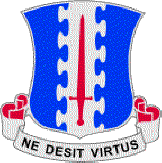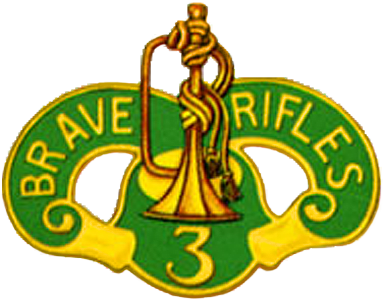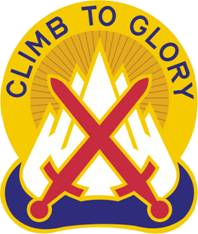|
Operation Gyroscope
Operation Gyroscope was a United States Army program implemented between 1955 and 1959 during the Cold War that modified the replacement system so that entire divisions were rotated out of overseas service together rather than as individuals. The program also applied to smaller nondivisional units, and was primarily used to exchange units between the United States and forces stationed in Germany under United States Army Europe. The system aimed to increase retention rates by boosting morale and unit cohesion with the added incentive of improving military family stability through keeping soldiers together for most of their careers. The program initially increased morale, but the Army was unable to keep its promises to soldiers and thus expected benefits failed to materialize, resulting in the early termination of the program after just one of the planned-three year rotation cycles had been completed. Background Retention problems Following the end of the Korean War, the United St ... [...More Info...] [...Related Items...] OR: [Wikipedia] [Google] [Baidu] |
United States Army
The United States Army (USA) is the land service branch of the United States Armed Forces. It is one of the eight U.S. uniformed services, and is designated as the Army of the United States in the U.S. Constitution.Article II, section 2, clause 1 of the United States Constitution (1789). See alsTitle 10, Subtitle B, Chapter 301, Section 3001 The oldest and most senior branch of the U.S. military in order of precedence, the modern U.S. Army has its roots in the Continental Army, which was formed 14 June 1775 to fight the American Revolutionary War (1775–1783)—before the United States was established as a country. After the Revolutionary War, the Congress of the Confederation created the United States Army on 3 June 1784 to replace the disbanded Continental Army.Library of CongressJournals of the Continental Congress, Volume 27/ref> The United States Army considers itself to be a continuation of the Continental Army, and thus considers its institutional inception to be th ... [...More Info...] [...Related Items...] OR: [Wikipedia] [Google] [Baidu] |
USNS General Alexander M
United States Naval Ship (USNS) is the prefix designation given to non- commissioned ships that are property of the United States Navy (USN). Definition United States Naval Ships are unarmed auxiliary support vessels owned by the U.S. Navy and operated in non-commissioned service by Military Sealift Command with a civilian crew. Some ships include a small military complement to carry out communication and special mission functions, or for force protection. In comparison, U.S. Navy ships commissioned into service have the designation " USS" and are armed, crewed by U.S. Navy personnel, and held in property by the United States Government. Additionally, the United States Naval Ships hull classification symbol begins with "T-" to denote its civilian crew. The USNS prefix can be assigned only while the ship is owned by the U.S. Navy. If, after being taken out of service, the ship is transferred to the Maritime Administration the prefix reverts to a civilian ship prefix such ... [...More Info...] [...Related Items...] OR: [Wikipedia] [Google] [Baidu] |
5th Infantry Division (United States)
The 5th Infantry Division (Mechanized)—nicknamed the "Red Diamond", or the "Red Devils" —was an infantry division of the United States Army that served in World War I, World War II and the Vietnam War, and with NATO and the U.S. Army III Corps. It was inactivated on 24 November 1992 and reflagged as the 2nd Armored Division. World War I Organization Units associated with the division included: The Fifth Division (Regular) was organized in December 1917, with headquarters at Camp Logan, Houston, Texas, as a part of the program for the expansion of the armed forces for service in World War 1. No specific date was designated for the division's activation but the initial personnel assigned to the division had a reporting date of December 1. * Headquarters, 5th Division * 9th Infantry Brigade ** 60th Infantry Regiment ** 61st Infantry Regiment ** 14th Machine Gun Battalion *10th Infantry Brigade ** 6th Infantry Regiment ** 11th Infantry Regiment ** 15th Machine Gun Battali ... [...More Info...] [...Related Items...] OR: [Wikipedia] [Google] [Baidu] |
11th Airborne Division (United States)
The 11th Airborne Division ("Arctic Angels") is a United States Army airborne formation, first activated on 25 February 1943, during World War II. Consisting of one parachute and two glider infantry regiments, with supporting troops, the division underwent rigorous training throughout 1943. It played a vital role in the successful Knollwood Maneuver, which was organized to determine the viability of large-scale American airborne formations after their utility had been called into question following a disappointing performance during the Allied invasion of Sicily. Held in reserve in the United States for the first half of 1944, in June the division was transferred to the Pacific Theater of Operations. Upon arrival it entered a period of intense training and acclimatization, and by November was judged combat-ready. The 11th Airborne saw its first action on the island of Leyte in the Philippines, but in a traditional infantry role. In January 1945 the division took part in the ... [...More Info...] [...Related Items...] OR: [Wikipedia] [Google] [Baidu] |
187th Airborne Infantry Regiment
The 187th Airborne Infantry Regiment (Rakkasans) is a regiment of the 101st Airborne Division. , the 1st and 3rd battalions are the only active elements of the regiment; they are assigned to the 3rd Brigade Combat Team, 101st Airborne Division. World War II and aftermath The regiment was originally constituted as the 187th Glider Infantry Regiment on , and activated on at Camp Mackall, North Carolina. It was originally a two battalion glider regiment assigned to the 11th Airborne Division, the men of the 187th trained both as glider and parachute troops. They moved to Camp Polk on 9 January 1944 for glider training. The regiment staged at Camp Stoneman, California on 29 April 1944, and departed from the San Francisco Port of Embarkation on 6 May 1944. The regiment arrived in New Guinea on 29 May 1944 and joined the New Guinea Campaign. The regiment departed New Guinea on 11 November 1944, and arrived on Leyte on 18 November 1944 to join the Leyte Campaign. The regimen ... [...More Info...] [...Related Items...] OR: [Wikipedia] [Google] [Baidu] |
Fort Campbell
Fort Campbell is a United States Army installation located astride the Kentucky–Tennessee border between Hopkinsville, Kentucky, Hopkinsville, Kentucky and Clarksville, Tennessee, Clarksville, Tennessee (post address is located in Kentucky). Fort Campbell is home to the 101st Airborne Division (Air Assault), 101st Airborne Division and the 160th Special Operations Aviation Regiment (Airborne), 160th Special Operations Aviation Regiment. The fort is named in honor of Union Army Brigadier General William B. Campbell, William Bowen Campbell, the last Whig Party (United States), Whig Governor of Tennessee. History The site for Mid-Campbell was selected on September 9, 1941, and the Title I Survey was completed November 15, 1941, coincidentally the same time the Imperial Japanese Navy, Japanese Imperial Fleet was leaving Japanese home waters for the attack on Pearl Harbor. Construction of Camp Campbell began on January 12, 1942. Within a year, the reservation designated as Camp Ca ... [...More Info...] [...Related Items...] OR: [Wikipedia] [Google] [Baidu] |
508th Infantry Regiment (United States)
The 508th Infantry Regiment (508th PIR, 508th AIR, or 508th IR) ("Red Devils" or "Fury from the Sky") is an airborne infantry regiment of the United States Army, first formed in October 1942 during World War II. The 508th is a parent regiment under the U.S. Army Regimental System, and two battalions from the regiment are currently active: the 1st Battalion, 508th Parachute Infantry Regiment (1-508th PIR) is assigned to the 3rd Brigade Combat Team, 82nd Airborne Division, and the 2nd Battalion, 508th Parachute Infantry Regiment (2-508th PIR) is assigned to the 2nd Brigade Combat Team, 82nd Airborne Division. The regiment served in combat during World War II, and regimental elements have served in combat in the Dominican Republic, Vietnam, Grenada, Panama, Iraq and Afghanistan. History World War II The 508th Parachute Infantry Regiment (508th PIR) was activated during World War II on 20 October 1942 at Camp Blanding, Florida. Lieutenant Colonel Roy E. Lindquist formed the unit ... [...More Info...] [...Related Items...] OR: [Wikipedia] [Google] [Baidu] |
Fort Meade
Fort George G. Meade is a United States Army installation located in Maryland, that includes the Defense Information School, the Defense Media Activity, the United States Army Field Band, and the headquarters of United States Cyber Command, the National Security Agency, the Defense Courier Service, Defense Information Systems Agency headquarters, and the U.S. Navy's Cryptologic Warfare Group Six. It is named for George G. Meade, a Union general from the U.S. Civil War, who served as commander of the Army of the Potomac. The fort's smaller census-designated place includes support facilities such as schools, housing, and the offices of the Military Intelligence Civilian Excepted Career Program (MICECP). History Initially called Camp Annapolis Junction, the post was opened as "Camp Admiral" in 1917 on acquired for a training camp. The post was called Camp Meade Cantonment by 1918, Camp Franklin Signal Corps school was located there and in 1919, the Camp Benning tank school—for ... [...More Info...] [...Related Items...] OR: [Wikipedia] [Google] [Baidu] |
3rd Cavalry Regiment (United States)
The 3rd Cavalry Regiment, formerly 3rd Armored Cavalry Regiment ("Brave Rifles") is a regiment of the United States Army currently stationed at Fort Hood, Texas. The regiment has a history in the United States Army that dates back to 19 May 1846, when it was constituted in the Regular Army as the Regiment of Mounted Riflemen at Jefferson Barracks, Missouri. This unit was reorganized at the start of the American Civil War as the 3rd U.S. Cavalry Regiment on 3 August 1861. In January 1943, the regiment was re-designated as the 3rd Cavalry Group ( Mechanized). Today they are equipped with Stryker vehicles. The 3rd Armored Cavalry Regiment was the last heavy armored cavalry regiment in the U.S. Army until it officially became a Stryker regiment on 16 November 2011. It will retain its lineage as the 3rd Cavalry Regiment. Under various names it has seen action during eleven major conflicts: the Indian Wars, the Mexican–American War, the American Civil War, the Spanish–American W ... [...More Info...] [...Related Items...] OR: [Wikipedia] [Google] [Baidu] |
2nd Armored Cavalry Regiment
The 2nd Cavalry Regiment, also known as the 2nd Dragoons, is an active Stryker infantry and cavalry regiment of the United States Army. The Second Cavalry Regiment is a unit of the United States Army Europe and Africa, with its garrison at the Rose Barracks in Vilseck, Germany. It can trace its lineage back to the early part of the 19th century. In addition to its two current names, former names are 2nd Riflemen, 2nd Dragoons, 2nd Constabulary Regiment, 2nd Armored Cavalry, 2nd Cavalry (Light), and 2nd Stryker Cavalry. Previous names and dates Previous designations of the regiment: 2nd Regiment of Dragoons (May 1836 – March 1843, April 1844 – August 1861); 2nd Regiment of Riflemen (March 1843 – April 1844); 2nd US Cavalry Regiment (August 1861 – July 1942); 2nd Cavalry Regiment (Mechanized) (January 1943 – December 1943); 2nd Cavalry Group (Mechanized) (December 1943 – July 1946); 2nd Constabulary Regiment (July 1946 – November 1948); 2nd Armored Cavalry R ... [...More Info...] [...Related Items...] OR: [Wikipedia] [Google] [Baidu] |
Fort Riley
Fort Riley is a United States Army installation located in North Central Kansas, on the Kansas River, also known as the Kaw, between Junction City and Manhattan. The Fort Riley Military Reservation covers 101,733 acres (41,170 ha) in Geary and Riley counties. The portion of the fort that contains housing development is part of the Fort Riley census-designated place, with a residential population of 7,761 as of the 2010 census. The fort has a daytime population of nearly 25,000. The ZIP Code is 66442. Namesake Fort Riley is named in honor of Major General Bennet C. Riley, who led the first military escort along the Santa Fe Trail. The fort was established in 1853 as a military post to protect the movement of people and trade over the Oregon, California, and Santa Fe trails. In the years after the Civil War, Fort Riley served as a major United States Cavalry post and school for cavalry tactics and practice. The post was a base for skirmishes with Native Americans after ... [...More Info...] [...Related Items...] OR: [Wikipedia] [Google] [Baidu] |
10th Infantry Division (United States)
The 10th Mountain Division (Light Infantry) is a light infantry division in the United States Army based at Fort Drum, New York. Formerly designated as a mountain warfare unit, the division was the only one of its size in the US military to receive specialized training for fighting in mountainous conditions. More recently, the 10th Mountain has been conducting operations in Iraq and Syria advising and assisting Iraqi Security Forces and People's Defense Units. Originally activated as the 10th Light Division (Alpine) in 1943, the division was redesignated the 10th Mountain Division in 1944 and fought in the mountains of Italy in some of the roughest terrain in World War II. On 5 May 1945 the division reached Nauders, Austria, just beyond the Reschen Pass, where it made contact with German forces being pushed south by the U.S. Seventh Army. A status quo was maintained until the enemy headquarters involved had completed their surrender to the Seventh. On 6 May, 10th Mountain troop ... [...More Info...] [...Related Items...] OR: [Wikipedia] [Google] [Baidu] |







